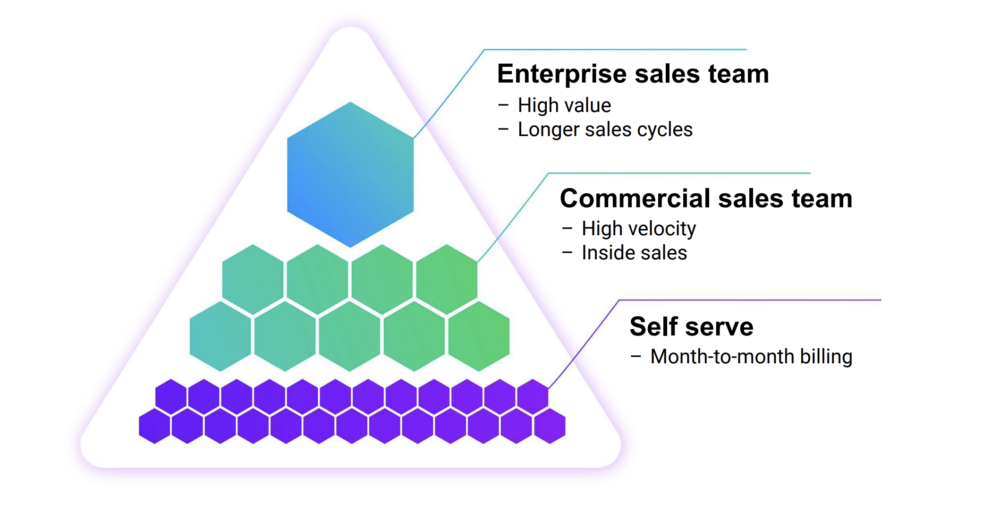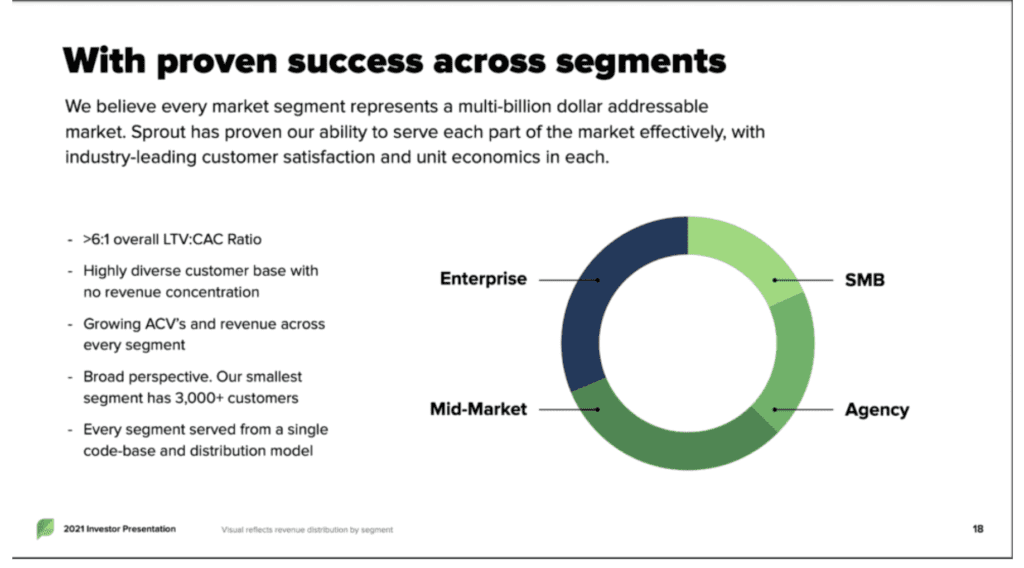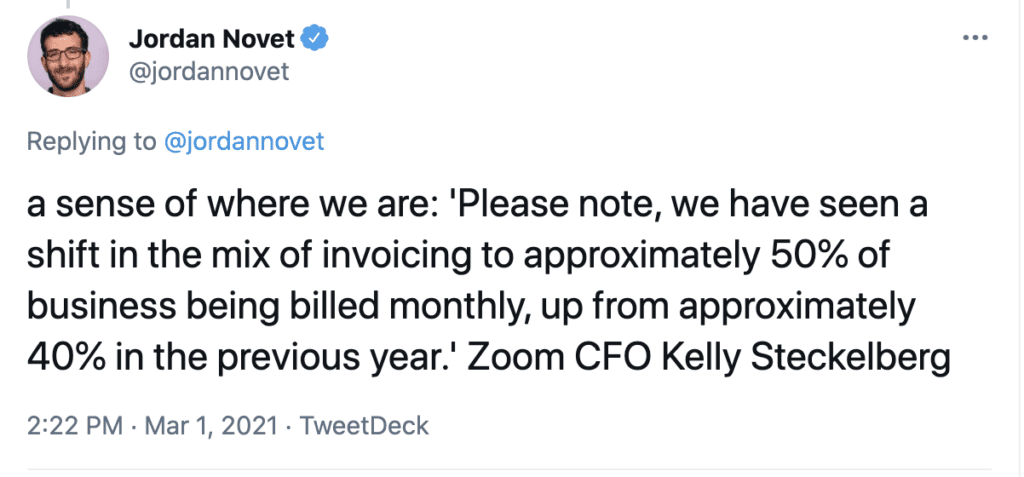We’ve been doing the 5 Interesting Learnings at SaaStr for quite a while, looking at many of the public SaaS leaders and pulling out the top learnings for founders and SaaS execs.
I think it would be interesting and helpful to pull out the Top 20 PLG / Self-Serve learnings from the series.
If you read the list of learnings, you may well find a few to learn from. And that challenge some of your assumptions on how to scale.
1. 60% of Asana’s customers come from self-service, 40% from sales. This is trending to 50/50 now that Asana has crossed $400m in ARR, but still a reminder a self-serve motion combined with sales jumping on the bigger deals can scale very, very far. Asana’s biggest growth is in its $50k+ deals, but its ACV is still just $3,600 … or $300 per month.
2. 80% of Datadog’s revenue at $1.2B revenue comes from its $100k+ customers — but its Free edition is still core to its lead gen. You don’t need to leave Free behiind, even at $1B+ ARR.
3. 60% of Expensify’s Customers started off in the Free edition, even at IPO. And most were end-users using Free that then recommended Expensify to their managers. Pretty amazing to see end-users without budget using a Free edition still driving the majority of growth at $150m+ ARR.
4. Toast’s SMB NRR is 114% today — but it took 4 full years just to get to 100%. A reminder that you don’t need to settle for sub-100% NRR from SMBs. And also that, with SMBs, it can take a while and a lot of value-add and learnings to get that NRR over 100%.
5. 38% of Freshworks customers still pay monthly, even at $400m+ ARR. We’ll see something similar with Zoom below. You don’t need to force it.
6. Sprout Social was able to IPO at $180m ARR — with 20,000+ of its customers just paying $99 a month. Sprout Social doesn’t only sell a low-end edition. It sells to customers S, M, and Larger.
7. Vimeo at $330m ARR is still 75% self-serv, 25% sales-driven revenue. Yes, you can (sometimes) do both., Vimeo has an interesting blend of self-service / freemium revenue and sales-driven larger deals. It has both (x) 1.5m self-service subscribers at an average of $214 year, (y) combined with 3,300 enterprise customers that go through the sales team that pay $22,000 a year on average.
8. Monday’s average customer only pays $2k a year, even at $400m+ in ARR! Yes, Monday is going upmarket and that’s important to its epic growth, but its customers still pay on average just a bit more than $2k.
9. Word-of-mouth remains HubSpot’s #1 source of new customers — even at $1.5B ARR. Word-of-mouth can scale forever. And it’s the true magic in scaling SMB SaaS.
10. Shopify isn’t getting more enterprise. Its SMBs are growing even faster than bigger customers. We’ve also seen this with Zoom, and it’s interesting. As fast as Shopify’s more enterprise offering (Shopify Plus) has grown, its SMBs have grown even faster. A reminder that sometimes as you go upmarket, the SMBs can still keep up the pace.
11. Bill.com has 121% NRR from SMBs — and that’s up from 110% at IPO. And these are very small SMBs. This is about as good as it gets.
12. Squarespace gets 75% of its customers to pay annually, to combat 85% NRR. Interesting that Squarespace unlike Zoom or Expensify or Freshworks really pushes its SMBs to pay annual. But it probably “has” to with only 85% NRR.
13. PagerDuty has 95% renewal rate, even with 10,000+ SMB customers. And until it started to go upmarket after $125m+ ARR, it never really raised prices. A challenge to settle for much less.
14. BigCommerce is #2 to Shopify and essentially has adopted identical pricing. Removing pricing as a reason to choose one or another can, at least sometimes, remove friction from sales. Because it’s not about price.
15. SmartSheet gets 90% of its SMB customers to pay annually. The main reason seems to be to ensure they put in the work to deploy SmartSheet into production. So in the end, friction is reduced by just not taking on the customers not willing to do the work to get going.
16. Only 2,800 of MongoDB’s customers went through the sales team. And they don’t push annual contracts. The other 23,000 self-served. A reminder again you can do both together. Mongo’s sales team looks for signals as to when to jump into deals — but doesn’t jump in when they aren’t needed.
17. Not pushing annual contracts helped MongoDB scale. As Mongo scaled up its sales team, at first it had an incentive program that heavily pushed annual deals. They saw this creating friction because of the approvals required for long-term commitments, so they changed the sale comp plan to incent sign-ups instead. A reminder that sales incentives really matter … and that you should just let customers buy the way they want to buy. If you want to close the most customers, at least.
18. Cloudflare has 3,200,000 Free users and 100,000+ paid at $500m+ ARR. So no, a “low” conversion number isn’t necessarily bad. CloudFlare gets everyone using their Free product. And it’s just fine if in the end, just 3% pay for it.
19. Only 8% of Slack’s revenue as it IPO’d came from Free-to-Paid conversions, but the 500,000 orgs on their Free plan were one of the top sources of awareness. The “old” Slack of small teams converting to Paid ended up a small amount of their revenue. But it continued to build massive awareness. And a hunting ground for the sales team.
20. 50% of Zoom’s customers pay monthly — and that’s up from 40% before. A reminder that if your product is as easy to adopt as Zoom … maybe let the customers pay the way they want to.
A lot to learn from the leaders in Cloud!
One size does not fit all. Free scales further than you think. Enterprise doesn’t always beat SMB. And Word-of-Mouth? Well, it’s still magic.
The post 20 Interesting PLG Learnings from The Leaders in SaaS appeared first on SaaStr.
via https://www.aiupnow.com
Jason Lemkin, Khareem Sudlow




